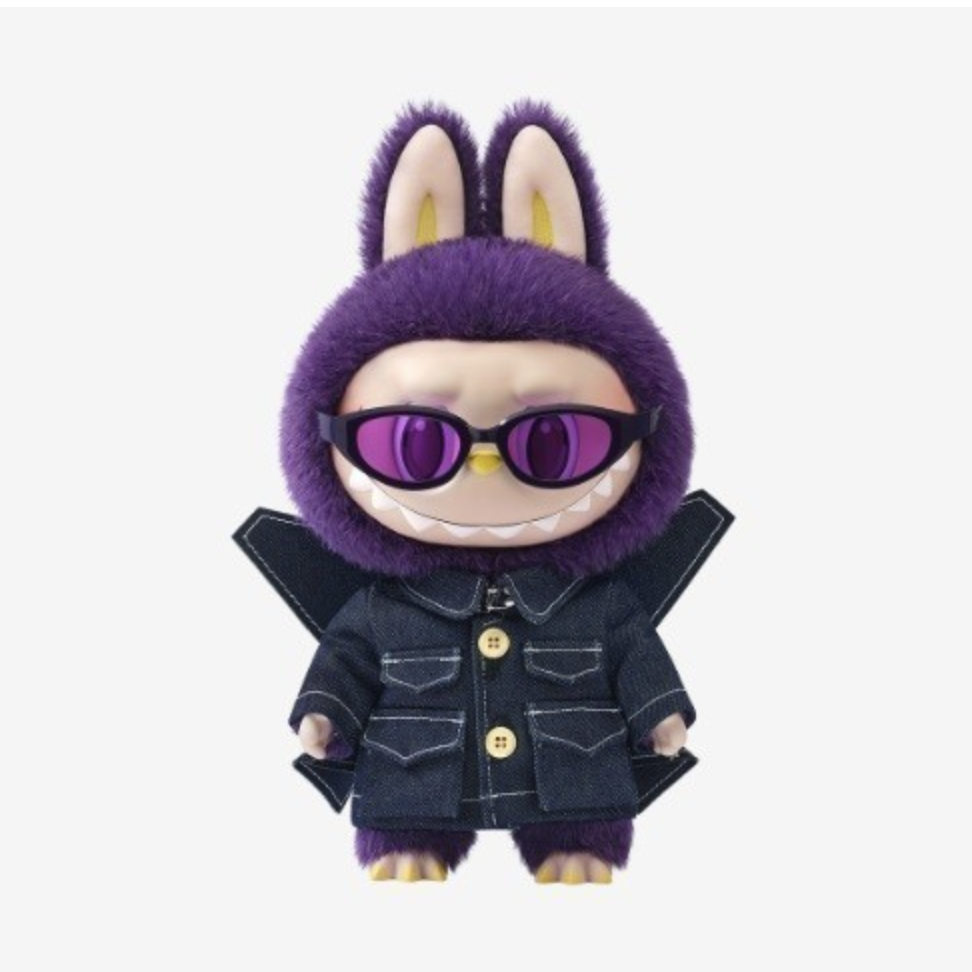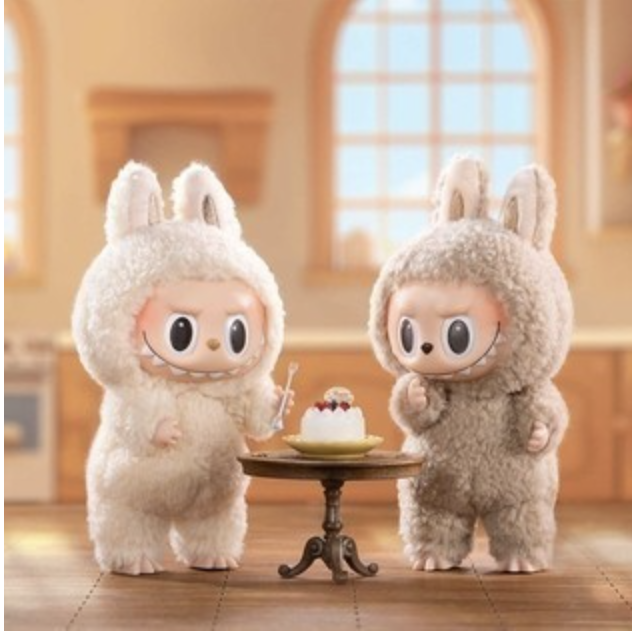No matter if you think they’re cute, odd, or quirky, you’ve likely heard of the viral plush dolls called Labubu.
Initially created by Chinese toy manufacturer Pop Mart, Labubu has taken the world by storm, garnering a slew of celebrity admirers including Rihanna, Dua Lipa, Kim Kardashian, and Blackpink’s Lisa. Fans everywhere, from Shanghai to London, are so passionate that long queues for purchasing the dolls have made headlines, sometimes leading to confrontations.
“Buying one amid such fierce competition gives you a real sense of accomplishment,” shares fan Fiona Zhang.
The global obsession with Labubu has nearly tripled Pop Mart’s profits in the past year. Some believe the craze has also enhanced China’s soft power, which was affected by the pandemic and tension with the West.

What led to this phenomenon?
What is Labubu?
This question continues to puzzle many; even those in the know struggle to articulate the hype surrounding it.
Labubu is both a fictional character and a brand. The name itself has no specific meaning; it’s the character from the toy series The Monsters, crafted by Hong Kong artist Kasing Lung.
With features like pointy ears, large eyes, and a cheeky grin revealing nine teeth, the creatures have divided opinions online, garnering both adoration and aversion.
According to Pop Mart’s official website, Labubu is described as “kind-hearted and always eager to assist, but often ends up causing trouble instead.”
Labubu dolls are part of various The Monsters series such as Big into Energy, Have a Seat, Exciting Macaron, and Fall in Wild.
The Labubu brand features additional characters from its universe, inspiring their own beloved dolls, including tribe leader Zimomo, companion Tycoco, and Mokoko.
While some dolls may seem similar to the casual observer, collectors can easily differentiate between them. However, Labubu’s soaring fame has certainly enhanced the appeal of the entire collection, which sells out quickly.
Where can you purchase Labubu?
Much of Pop Mart’s success comes from “blind boxes,” where customers discover their purchase only after unboxing. The collaboration with Kasing Lung for Labubu rights began in 2019, nearly a decade after Pop Mart was established by entrepreneur Wang Ning in Beijing, initially as a variety store reminiscent of a dollar store.
After the blind box concept gained traction, Pop Mart released its first series in 2016, featuring the Molly dolls—child-like figures by artist Kenny Wong.
However, it was Labubu that truly fueled Pop Mart’s growth. In December 2020, the company went public on the Hong Kong Stock Exchange, and its stock has surged by over 500% in just a year.
Today, Pop Mart is a significant retailer, boasting over 2,000 vending machines, or “roboshops,” around the globe. Labubu dolls can be found in stores across more than 30 countries, including the US, UK, Australia, and Singapore. Many locations have recently suspended sales due to overwhelming demand. Sales outside mainland China accounted for nearly 40% of the company’s revenue in 2024.
In a testament to Labubu’s popularity, Chinese customs recently announced the seizure of over 70,000 counterfeit dolls.
However, the surge in demand didn’t materialize overnight. It took several years for these whimsical creatures to captivate audiences.

The rise of Labubu as a global trend
Initially, Labubu’s fame was limited to China. Its popularity grew significantly after the country emerged from the pandemic in late 2022, according to Ashley Dudarenok, founder of the China-focused research firm ChoZan.
“Post-pandemic, many people in China sought emotional solace… and Labubu’s charming yet chaotic persona resonated,” she notes.
China’s highly competitive internet often produces viral trends that don’t spread globally. Labubu, however, gained traction rapidly across Southeast Asia.
Fiona, now living in Canada, first learned about Labubu from friends in the Philippines in 2023. She started purchasing them, finding them cute, but admits that the buzz around them drives her desire: “The more popular they become, the more I want one.”
Her husband struggles to understand her fascination, considering she’s a woman in her 30s drawn to such collectibles, especially regarding their color. The affordability is a factor too, she adds. Despite rising resale prices, she finds the original prices—CAD 25–70—“reasonable for most people in her circle.”
“That’s about the cost of a bag charm these days, making it accessible to most buyers,” she points out.
The popularity of Labubu skyrocketed in April 2024 after Thai K-pop star Lisa began sharing Instagram posts featuring various Labubu dolls. Soon, more global celebrities joined in, transforming them into an international sensation.
Singer Rihanna was spotted with a Labubu charm on her Louis Vuitton handbag in February, while Kim Kardashian showcased her collection of ten Labubu dolls on Instagram that April. In May, former England football captain Sir David Beckham shared a post featuring a Labubu doll he received as a gift from his daughter.
Now, Labubu dolls are ubiquitous—online and among friends, colleagues, or even strangers.
What drives the Labubu obsession?
Honestly, the reasons behind Labubu’s appeal remain elusive. Like many viral trends, its charm is difficult to pinpoint—a blend of timing, taste, and online randomness.
Beijing appears pleased with the outcome. The state news agency Xinhua claims Labubu “showcases the allure of Chinese creativity, quality, and culture in a relatable manner,” providing a glimpse into the concept of “cool China.”
Xinhua also highlights other instances of Chinese cultural IP reaching a global audience, such as the video game Black Myth: Wukong and the animated sensation Nezha.
Some analysts express surprise at how well Chinese companies—ranging from EV manufacturers to retailers—are faring, despite Western concerns about Beijing’s intentions.
“BYD, DeepSeek, and similar firms, including Labubu, share an interesting characteristic,” says Chris Pereira, CEO of consultancy iMpact, in a BBC News interview. “They’re so exceptional that their origin doesn’t matter. They’re impossible to ignore.”
Meanwhile, Labubu continues to attract social media enthusiasts, with millions tuning in to watch unboxing videos. One of the most popular clips, shared in December, captures intrigued US airport security personnel gathering around a traveler strikingly protective of their sealed Labubu box, eager to discover which doll is inside.
This element of surprise is a significant factor in Labubu’s allure, according to long-time collector Desmond Tan. While browsing a Pop Mart store in Singapore, he enthusiastically shakes blind boxes before selecting one—a sight often seen in Pop Mart locations.
Desmond actively seeks out “chasers,” the limited-edition collectibles from Pop Mart’s various toy lines, including Labubu. He estimates finding one chaser in every ten boxes—this rate is considered favorable compared to the usual one-in-100 odds.
“The satisfaction of locating a chaser by shaking the box, recognizing the subtle differences…,” he notes, “is profoundly rewarding.”
“If I can find it in just one or two attempts, I’m thrilled!”
Ask me anything
Explore related questions

















